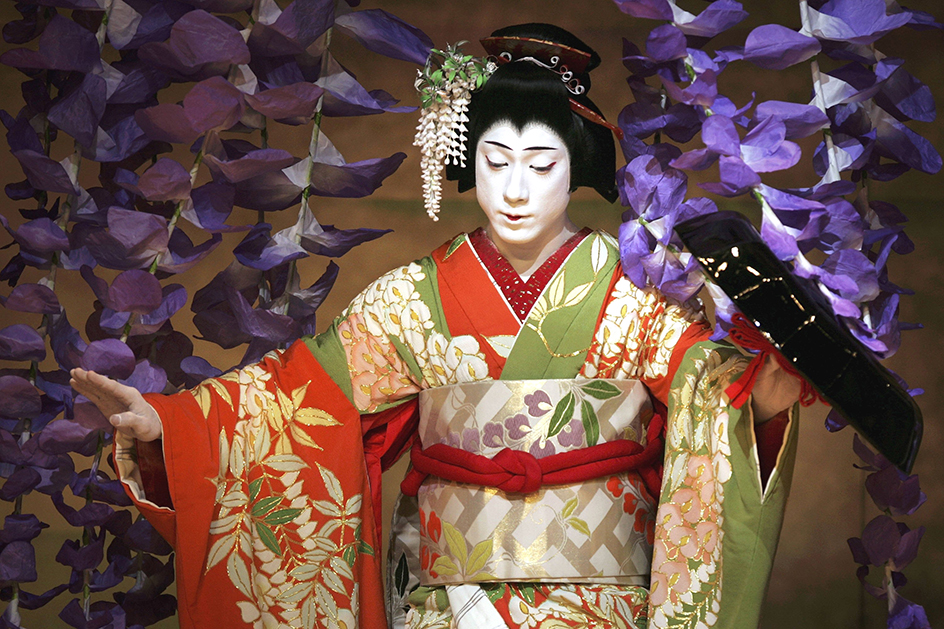Kabuki << kah BOO kee >> is one of the most popular forms of drama in Japan. It includes music, dance, mime, exaggerated acting, and spectacular costumes and lavish scenery. Kabuki traditionally is performed only by men, who play the roles of female characters as well as males. In Japanese writing, kabuki is written in three symbols, ka (singing) , bu (dancing) , and ki (skill) .

Kabuki has been an important cultural force in Japan for centuries, influencing styles and tastes in the arts and society in general. The finest kabuki actors have become national celebrities. Performers have passed on acting techniques from father to son. For example, the Ichikawa family has produced celebrated actors since the 1600’s.
Kabuki plays commonly are based on family dramas, called sewamono, and history, called jidaimono. Typical themes include love, revenge, and honor. The tone of the plays ranges from farce to violent melodrama. Probably the most famous kabuki play is Chusingura, originally written in 1703 by the famous playwright Chikamatsu and later revised numerous times. The basic story concerns how 47 warriors called samurai avenge the forced suicide of their lord. After gaining their revenge, the 47 all commit ritual suicide. The story is based on actual events in 1703.
Kabuki players wear extravagant makeup and move and speak in an exaggerated and stylized way, with no attempt at realism. The Japanese consider kabuki as primarily an opportunity for actors to demonstrate their range of vocal and physical movement skills. Traditional kabuki roles include the man of courage (tachiyaku), the evil man (katakiyaku), the young man (wakashugata), the comic character (dokegata), and the woman character (onnagata).
Kabuki originated during the early 1600’s. It borrowed heavily from the other two major forms of Japanese drama of the time, bunraku (puppet or doll theater) and no. The nobility favored no drama, which emphasized elegant artistry and solemnity. Kabuki became popular with farmers and townspeople, who were entertained by the excitement and drama of kabuki theater.
